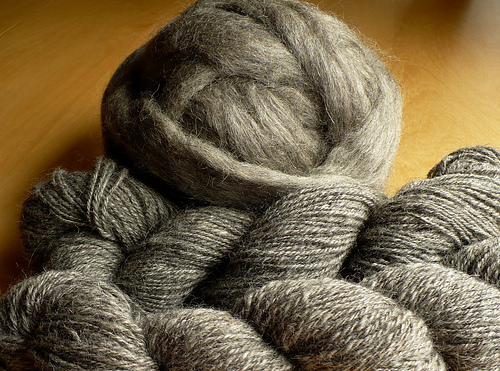
When Lord of the Rings was released, knitters and spinners took notice. Several of the textiles (including the Elven cloaks) were made with handspun Gotland fleece, a heritage breed from a flock that was based in New Zealand. This breed has a beautiful natural color which varies from light grey to silver all the way through to a dark charcoal grey.
The Gotland is an ancient breed of longwool sheep, one with close ties to the Finnwool breed. According to legend, the Gotland was first established as a breed by the Vikings, on the Swedish island of Gotland. Reportedly, the Vikings used Karakul and Romanov sheep which they brought back from Russia, and crossed these breeds with the native sheep of Sweden.
Like other longwools, this one falls in long, loose curly locks in a characteristic S-shaped curl. The fleece has a silky texture and a lot of luster, not unlike other more well known longwool breeds like the Wensleydale.
The wool of the Gotland sheep is fairly fine, usually from 29 to 34 microns in diameter. (For comparison, merino wool graded "superfine" falls between 18 and 18 microns in diameter.) This makes it soft, and its long staple length makes it perfect for spinning into laceweight yarn. It is also suitable for next-to-the-skin projects like scarves and of course Elven cloaks.
My big question about Gotland wool is, why is it so rare? I suppose this reflects what a small, specialty niche the handspinning market really is. Everyone I know who has tried spinning Gotland fleece has raved about it. You would think there would be more Gotland sheep around, but it can be hard to track down a source of the wool for spinning. There are several Etsy sellers offering Gotland roving, and Spunky Eclectic sells it by the ounce. Delicious!
Image courtesy Flickr/Annkari

0 comments